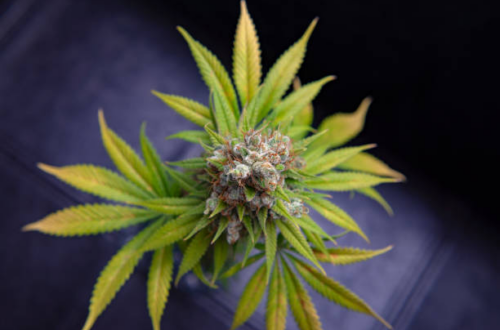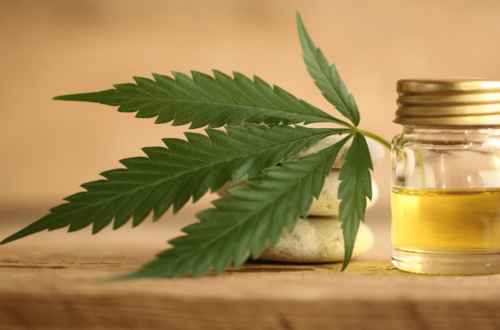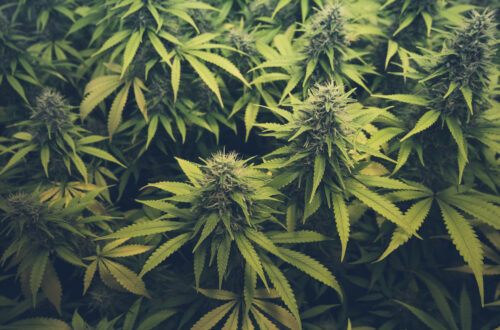-
The Changing Laws of Medical Marijuana: What Patients Need to Know in 2025
Only a decade ago, medical marijuana existed at the edge of mainstream medicine. Many patients were curious, but access was limited, stigma was strong, and legal protections were inconsistent. Today, the landscape looks dramatically different. Research has expanded, healthcare professionals are more open to discussing cannabis-based treatment, and governments worldwide continue updating laws to address demand, safety, and regulation.
Heading into 2025, patients are asking new questions:
Is medical marijuana easier to access? What rules have changed? Are there new protections or restrictions? And what should first-time patients expect legally and medically?This article breaks down what individuals need to know — clearly, responsibly, and without hype — so they can navigate medical marijuana laws with confidence.
What Is Medical Marijuana?
Medical marijuana refers to cannabis products prescribed or recommended by a licensed healthcare provider to treat qualifying medical conditions. These products may contain:
- THC (tetrahydrocannabinol): associated with pain relief and psychoactive effects
- CBD (cannabidiol): non-intoxicating with anti-inflammatory and calming properties
- Terpene and cannabinoid blends: customized for specific medical goals
Unlike recreational cannabis, medical marijuana operates within regulated healthcare frameworks, requiring medical assessments, documentation, and legally approved purchase channels.
How Medical Marijuana Works in the Body
Medical cannabis interacts with the endocannabinoid system (ECS) — a biological network responsible for regulating pain, appetite, sleep, immune response, and emotional balance.
THC binds directly to cannabinoid receptors, influencing pain perception and neurological signaling. CBD works more indirectly, moderating inflammation, stress response, and neurotransmitter activity.
This interaction explains why cannabis may help patients who haven’t responded well to conventional medication — but it also clarifies why proper dosing and medical supervision matter.
Benefits of Medical Marijuana Supported by Research
Emerging research and patient reports suggest several therapeutic benefits:
✅ Chronic Pain Management
Studies indicate cannabis may reduce nerve and inflammatory pain, offering an alternative to long-term opioid therapy.
✅ Mental Health Support
Some patients report improvements in anxiety, PTSD symptoms, and sleep disorders when medically monitored.
✅ Cancer Treatment Symptom Relief
Medical marijuana may help ease nausea, appetite loss, and treatment-related discomfort.
✅ Neurological Conditions
CBD-based medications have shown effectiveness in certain epilepsy disorders.
✅ Inflammatory and Autoimmune Conditions
Cannabinoids may support symptom reduction in arthritis, Crohn’s disease, and multiple sclerosis.
However, benefits vary based on diagnosis, genetics, tolerance, delivery method, and medical oversight — meaning results are not universal.
Risks, Side Effects & Limitations
Despite increasing acceptance, medical marijuana is not risk-free.
Possible side effects include:
- Dizziness or fatigue
- Impaired short-term memory
- Dry mouth
- Increased heart rate
- Anxiety or paranoia
- Cognitive impairment when overused
Long-term health effects remain under study. Adolescents, pregnant individuals, people with unstable heart conditions, or those with psychotic disorders may face increased risks.
Patients should never begin medical marijuana treatment without licensed medical guidance — especially if they take prescription medications.
Who Qualifies for Medical Marijuana?
Eligibility laws vary, but some commonly recognized qualifying conditions include:
- Chronic or severe pain
- Cancer or chemotherapy symptoms
- Multiple sclerosis
- Epilepsy
- HIV/AIDS-related symptoms
- PTSD and anxiety disorders
- Neuropathy
- Glaucoma
- Parkinson’s disease
- Terminal illnesses
Approval typically requires documented symptoms, medical records, and physician evaluation. Self-diagnosis does not qualify.
The Evolving Legal Landscape in 2025
Medical marijuana laws continue shifting globally. Several notable trends define 2025:
1. More Countries & States Legalizing Medical Use
Public demand and research-backed results have influenced policymakers to expand access, especially for chronic and neurological conditions.
2. Standardized Patient Registries
Governments now require secure digital patient databases to prevent misuse, fraud, and duplicate prescriptions.
3. Stronger Product Regulation
More lawmakers mandate lab testing for:
- Pesticides
- Potency
- Contaminants
- Accurate labeling
This increases patient safety and transparency.

4. Workplace Policies Under Revision
Employers increasingly distinguish between recreational and medically authorized cannabis use — though protections still vary widely.
5. Expanded Telehealth Evaluations
Virtual medical cannabis consultations are becoming more accepted, especially for patients with mobility limitations.
6. Research-Driven Legal Revisions
Several regions now require lawmakers to consider updated clinical evidence before renewing or modifying cannabis policy.
These shifts demonstrate an effort to balance patient access with safety, accountability, and public health concerns.
Eligibility Process & Medical Evaluation in 2025
While specific processes differ, most systems follow a similar pathway:
- Confirm your diagnosis through medical records
- Schedule an appointment with a licensed cannabis physician
- Discuss symptoms, treatment history, and goals
- Receive written certification or authorization if eligible
- Register in a government-approved patient system
- Purchase from licensed dispensaries or pharmacies
Patients may need annual renewal, updated medical documentation, or follow-up visits to maintain legal access.
Legal Considerations Patients Should Understand
Regardless of location, patients should confirm:
- Age restrictions
- Purchase limits
- Possession rules
- Driving impairment laws
- Public consumption policies
- Travel restrictions — especially across borders
- Workplace screening policies
- Renewal requirements
Ignorance of the law does not protect patients from penalties — staying informed matters.
Different Forms and Methods of Use
Patients may be prescribed or recommended:
- Oils and tinctures
- Capsules or tablets
- Edibles
- Vaporized products
- Topicals or creams
- Sprays
- Flower (in regulated jurisdictions)
Each delivery method affects absorption rate, duration, and symptom relief — meaning medical guidance is crucial.
When Medical Marijuana May NOT Be Recommended
A healthcare provider may advise against cannabis if a patient:
- Has a history of psychosis or schizophrenia
- Is pregnant or breastfeeding
- Uses medications with harmful interactions
- Has severe heart disease
- Abuses substances or alcohol
- Is unwilling to follow dosing and monitoring guidelines
Medical marijuana should never replace emergency care, prescribed medication, or mental health treatment without professional oversight.
Final Thoughts: Staying Informed and Protected in 2025
Medical marijuana laws are maturing — not disappearing. As governments refine regulations, safety and accessibility remain central priorities. For patients, understanding legal responsibilities, medical requirements, and treatment expectations is essential.
If you’re considering medical marijuana, start with a conversation — not assumptions. Speak with a qualified clinician, gather your medical records, and learn the legal rules where you live. Responsible, informed decisions lead to safer and more effective treatment outcomes.
FAQS
How have medical marijuana laws changed in 2025?More regions have legalized or expanded access to medical marijuana, strengthened product testing requirements, and implemented digital patient registries for improved safety. Many governments now allow telehealth consultations, while others are reviewing workplace prot
Can medical marijuana patients travel with their medication in 2025?Travel rules vary widely. Some areas allow transportation between regions with similar laws, while others strictly prohibit it. International travel with cannabis remains risky and often illegal. Patients should always verify local, federal, and airport policies before traveling, even if they have a valid medical authorization.
Are more medical professionals prescribing cannabis in 2025?Yes—growing research, shifting laws, and increased training have encouraged more healthcare providers to consider cannabis as a treatment option. Still, not every doctor is licensed or comfortable prescribing it. Patients may need referrals to certified medical cannabis clinicians, depending on regional requirements.
Do stricter product regulations benefit patients?Absolutely. Mandatory testing, accurate labeling, and safety standards help ensure patients receive consistent, contaminant-free medical cannabis. These regulations reduce health risks and improve treatment reliability. While they may increase product costs, they also improve transparency and trust between patients, providers, and dispensaries.
Are recreational and medical marijuana laws becoming interchangeable?Not entirely. Some regions allow recreational sales but still maintain distinct medical programs offering lower pricing, tax exemptions, stronger potency limits, or specialized formulations. Medical systems also require physician oversight and documentation. For patients seeking therapeutic relief, medical authorization still provides meaningful benefits.
-
Medical Marijuana for Seniors: Safe Relief for Pain, Sleep, and Appetite
Introduction
As people age, chronic pain, sleep disturbances, and decreased appetite become increasingly common. Traditional medications often come with side effects, especially in seniors who may already be taking multiple prescriptions. Medical marijuana is emerging as a safe and effective alternative, offering relief while supporting overall wellness. Understanding its uses, benefits, and legal considerations is essential for seniors and caregivers exploring this treatment.
What Is Medical Marijuana?
Medical marijuana refers to cannabis used under medical supervision to treat specific health conditions. Unlike recreational cannabis, which is often consumed for its psychoactive effects, medical marijuana is formulated with precise levels of cannabinoids like CBD and THC to achieve therapeutic results.
Origins and Regulation
Cannabis has a long history of medicinal use, but modern medical marijuana is standardized and regulated. In countries such as Australia, Canada, and the U.S., patients typically require a doctor’s prescription. These prescriptions ensure that the product is safe, consistent, and tailored to individual health needs.
How Cannabis Works in the Human Body
The endocannabinoid system (ECS) plays a central role in how medical marijuana affects the body. This system regulates:
- Pain perception
- Mood and stress responses
- Appetite and digestion
- Inflammation and immune responses
THC interacts mainly with CB1 receptors in the brain, providing pain relief and appetite stimulation. CBD modulates CB1 and CB2 receptors to reduce inflammation, improve sleep quality, and alleviate anxiety without causing a high.
Key Medical Uses and Benefits for Seniors
Medical marijuana offers several benefits particularly relevant to older adults:
Pain Relief
Chronic pain from arthritis, neuropathy, or joint degeneration can be debilitating. Studies show that medical marijuana can reduce pain intensity and improve mobility, often allowing seniors to decrease reliance on opioids or NSAIDs.
Sleep Improvement
Sleep disturbances are common in seniors. CBD and balanced THC products can promote deeper, more restorative sleep, reducing insomnia and nighttime awakenings.
Appetite Stimulation
Loss of appetite and unintentional weight loss can compromise health. THC-based treatments enhance appetite and support better nutrition, particularly for seniors recovering from illness or chemotherapy.
Mood and Anxiety Support
Medical cannabis may also improve mood and reduce anxiety, enhancing overall quality of life for older adults experiencing social isolation, stress, or depression.
See more: CPAP Mask Leaks: Common Causes and How to Fix Them
The Role of Cannabinoids: CBD and THC
Understanding CBD and THC is crucial for seniors considering medical marijuana:
- CBD (Cannabidiol): Non-psychoactive, reduces inflammation, supports sleep, and eases anxiety.
- THC (Tetrahydrocannabinol): Psychoactive, offers pain relief and appetite stimulation but may cause mild euphoria.
Doctors often use CBD-dominant products with small amounts of THC for seniors to maximize therapeutic benefits while minimizing psychoactive effects.

Medical Marijuana in Modern Treatments (Real-World Examples)
Australia
Through the TGA Special Access Scheme, seniors can access cannabis-based medicines for chronic pain, insomnia, or appetite loss. Clinics provide tailored dosing plans and monitor outcomes closely.
United States
In states like California and Florida, senior-focused medical cannabis programs are on the rise, often providing oils, tinctures, and low-dose edibles for safer administration.
Canada
Licensed producers offer standardized products with clear cannabinoid ratios. Physicians can guide seniors on gradual dose escalation, ensuring safe and effective treatment.
Legal and Ethical Considerations
For seniors, legal and ethical considerations include:
- Prescription Requirements: Only licensed doctors can authorize medical cannabis use.
- Regulated Products: Ensuring access to quality-controlled, approved formulations is essential.
- Ethical Use: Seniors may be more susceptible to misuse or drug interactions, highlighting the need for careful medical supervision.
Potential Risks and Side Effects
Medical marijuana is generally safe for seniors when monitored, but potential side effects include:
- Drowsiness or fatigue
- Dizziness or low blood pressure
- Interactions with other medications
- Mild dependency risk with high-THC products
Doctors usually recommend starting with low doses, gradually adjusting while monitoring for adverse reactions.
The Future of Cannabis in Senior Care
Emerging trends indicate that medical cannabis could become a standard option in geriatric care:
- Ongoing Research: Clinical trials are exploring cannabis for pain, sleep, and cognitive function in older adults.
- Policy Evolution: Regulatory frameworks are improving access and quality control.
- Public Acceptance: Growing awareness reduces stigma, encouraging seniors to discuss cannabis openly with healthcare providers.
As evidence grows, medical marijuana may become a key tool for improving quality of life in seniors.
Conclusion
Medical marijuana offers seniors a safe and effective option for pain relief, sleep improvement, and appetite stimulation. With proper medical supervision, tailored dosing, and adherence to legal requirements, cannabis can significantly enhance quality of life. Seniors and caregivers should collaborate closely with healthcare providers to ensure informed and responsible use.
FAQS
Can seniors safely use medical marijuana with other medications?Medical marijuana can interact with certain prescriptions like blood thinners or sedatives. Seniors should always consult a healthcare provider to avoid adverse interactions and ensure safe, coordinated care.
What forms of medical cannabis are best for seniors?Oils, tinctures, and capsules are often preferred due to controlled dosing and ease of ingestion. Inhaled forms are less common but may be used under medical guidance for rapid symptom relief.
How do doctors determine the right dose for older adults?Physicians start with low doses, monitor effects, and gradually adjust. Factors include age, weight, health conditions, and other medications to ensure efficacy and safety.
Will medical marijuana make seniors feel “high”?Products with low THC and higher CBD are designed to provide therapeutic benefits without significant psychoactive effects, minimizing euphoria and cognitive impact.
Is medical marijuana legal for seniors in Australia?es, seniors can access medical cannabis through the TGA Special Access Scheme, with prescriptions tailored to individual health conditions and careful medical oversight.
-
The Future of Medical Cannabis: Trends to Watch
Medical cannabis has come a long way since it was first introduced as a treatment option for various ailments. Once a controversial topic, it has now gained widespread acceptance in many parts of the world. This article explores the future of medical cannabis, highlighting key trends that are likely to shape its growth and impact over the next decade.
Overview of Medical Cannabis
Medical cannabis, often referred to as medicinal marijuana, is derived from the Cannabis sativa plant and is used to treat a variety of medical conditions. It has been used for centuries, dating back to ancient civilizations that utilized cannabis for pain relief, anxiety, and even as an anesthetic. Today, it’s primarily used to treat chronic pain, mental health issues, epilepsy, and other neurological conditions.
See more: Terpenes in Medical Marijuana: An Overview
Cannabis contains compounds known as cannabinoids, primarily THC (tetrahydrocannabinol) and CBD (cannabidiol), which interact with the body’s endocannabinoid system to produce therapeutic effects. THC is the psychoactive compound responsible for the “high” associated with marijuana, while CBD is non-psychoactive and is credited with various medicinal benefits, including anti-inflammatory and anti-anxiety properties.
Evolving Legal Landscape
The legal status of medical cannabis is rapidly changing worldwide. Over the past few years, many countries and states have shifted their stance, legalizing cannabis for medical use. In the United States, for example, over 30 states have legalized medical cannabis, though it remains illegal at the federal level. Similarly, countries like Canada and Uruguay have fully legalized cannabis, while others, such as Germany and the Netherlands, have adopted more restrictive policies, allowing cannabis use only for certain medical conditions.
Despite the growing acceptance, the global legal landscape remains inconsistent, and this presents challenges for both patients and healthcare providers. Some regions are still grappling with how to regulate medical cannabis effectively, balancing public health concerns with the demand for treatment. As regulations evolve, countries must navigate issues like prescribing standards, quality control, and accessibility to ensure patient safety.
Technological Innovations
Technological advancements are playing a significant role in improving the effectiveness of medical cannabis. One of the most significant innovations is the development of more refined extraction methods. Today, cannabis is processed into a variety of product forms, including oils, tinctures, capsules, edibles, and vapes. Each method offers different bioavailability rates and benefits, enabling patients to choose the one that best suits their needs.
Cultivation techniques have also evolved, with growers using advanced technologies like hydroponics and vertical farming to produce high-quality cannabis more efficiently. These innovations help meet the increasing demand for medical cannabis while ensuring consistency and potency in the final product. As the industry matures, we can expect even more sophisticated methods of cultivation and product formulation that will enhance the efficacy and accessibility of medical cannabis.
Medical Research and Clinical Trials
Ongoing research and clinical trials are crucial to understanding the full potential of medical cannabis. Scientists are continuously studying its effects on a range of conditions, from chronic pain to mental health disorders like anxiety and depression. Recent studies have shown promising results for cannabis in managing pain, reducing inflammation, and improving quality of life for patients with conditions like multiple sclerosis and Parkinson’s disease.

As more clinical trials are conducted, we can expect a deeper understanding of cannabis’s therapeutic applications. Researchers are particularly focused on how cannabis interacts with other treatments, such as chemotherapy, and how it may enhance or support conventional medical therapies. With the growing body of evidence supporting its use, medical cannabis could become a mainstream treatment option for a variety of conditions in the near future.
Integration into Mainstream Healthcare
One of the most exciting trends is the integration of medical cannabis into mainstream healthcare. As more doctors gain knowledge and confidence in prescribing cannabis-based treatments, we are likely to see its increased use in hospitals, pain management centers, and specialized clinics. The stigma surrounding cannabis is gradually fading, allowing healthcare professionals to consider it as a legitimate treatment option alongside other therapies.
Several states and countries have already seen success with medical cannabis programs, and many healthcare providers are now offering cannabis consultations to patients. This integration is not without challenges, though, particularly when it comes to training medical professionals and establishing clear guidelines for use. However, as more evidence accumulates and patient experiences demonstrate its efficacy, medical cannabis is poised to become a standard treatment for many conditions.
Consumer Trends and Market Growth
The demand for medical cannabis is growing rapidly, driven by increased public awareness and the expanding body of research supporting its use. Consumers are seeking alternative treatments for conditions that traditional medicine has struggled to address. This has led to a boom in the cannabis market, with new companies entering the industry every year. These businesses are not just selling cannabis; they are also developing new products designed to enhance the patient experience, such as cannabis-infused topicals, edibles, and wellness supplements.
The growing acceptance of medical cannabis has also led to significant investments in the industry, with venture capitalists and healthcare companies eager to tap into this emerging market. The market for medical cannabis is expected to continue growing, and as more countries legalize and regulate cannabis, the global market will likely expand even further.
Future Outlook
Looking ahead, the future of medical cannabis is bright. With ongoing advancements in research, technology, and legal reform, medical cannabis is poised to become an essential part of the healthcare landscape. We can expect increased access to cannabis-based treatments, advancements in product formulations, and more robust evidence supporting its use in clinical settings.
As the medical community continues to embrace cannabis as a viable treatment option, we may see it integrated into a wider range of healthcare services. For patients, this means better access to alternative therapies that can improve their quality of life, particularly for those with chronic conditions or those who haven’t found success with conventional treatments.
In conclusion, the future of medical cannabis looks promising. With its potential to revolutionize healthcare, treat a wide range of conditions, and offer a safer alternative to opioids and other pharmaceuticals, medical cannabis is set to play a significant role in the future of medicine. As the industry continues to evolve, patients, healthcare providers, and researchers alike will benefit from the growing body of knowledge and the expanding availability of cannabis-based therapies.
-
CPAP Mask Leaks: Common Causes and How to Fix Them
Continuous Positive Airway Pressure (CPAP) therapy is an effective treatment for obstructive sleep apnoea. However, one of the most common issues faced by users is mask leaks. These leaks can compromise the effectiveness of the therapy, leading to disrupted sleep and decreased overall health benefits. Understanding the common causes of CPAP mask leaks and how to address them is essential for optimal treatment.
Understanding CPAP Masks
CPAP masks come in various shapes and sizes, designed to accommodate different facial structures and preferences. The most common types include nasal masks, full-face masks, and nasal pillows. Each type has its own advantages and potential for leaks, making it crucial to choose the right one for individual needs. The choice of mask can significantly impact the comfort and efficacy of CPAP therapy, which is essential for those suffering from obstructive sleep apnoea. As such, users should take the time to explore their options and consult with healthcare professionals to find the most suitable mask for their unique circumstances.

The Importance of a Proper Fit
A proper fit is vital for the effectiveness of CPAP therapy. If the mask is too loose, it can cause air to escape, leading to leaks. Conversely, a mask that is too tight can cause discomfort and skin irritation. Therefore, it is essential to find a balance that ensures a snug yet comfortable fit. Regular adjustments may be necessary, especially as one’s weight fluctuates or if the mask material changes over time. Many manufacturers provide fitting guides and allow users to try on different sizes, which can be particularly helpful in achieving that perfect fit.
Common Types of CPAP Masks
1. **Nasal Masks:** These cover the nose and are suitable for those who breathe through their nose during sleep. They are less obtrusive and can be more comfortable for some users. Additionally, nasal masks often come with adjustable straps and cushioning to enhance comfort, making them a popular choice among first-time CPAP users.
2. **Full-Face Masks:** These cover both the nose and mouth, making them ideal for mouth breathers or those who require higher pressure settings. They provide a secure seal that can prevent air leaks, which is particularly beneficial for individuals with nasal congestion or those who may inadvertently breathe through their mouth while sleeping. However, some users may find full-face masks to be bulkier, which can take some getting used to.
3. **Nasal Pillows:** These are small cushions that fit directly into the nostrils. They are lightweight and less invasive, but may not be suitable for everyone. Nasal pillows are often favoured by active sleepers or those who wear glasses, as they allow for greater freedom of movement and a clearer line of sight. Furthermore, their minimal design can make them a more appealing option for those who feel claustrophobic with larger masks. It’s worth noting that while nasal pillows can be a great choice, they may require some adjustment for optimal comfort and seal, particularly for users who are new to CPAP therapy. Find more about claustrophobic on https://www.webmd.com/anxiety-panic/claustrophobia-overview
Common Causes of CPAP Mask Leaks
Identifying the cause of mask leaks is the first step towards resolving the issue. Several factors can contribute to this problem, and understanding them can help users take appropriate action.
Improper Fit
One of the most prevalent causes of leaks is an improper fit. Masks that are too large or too small will not create a proper seal, allowing air to escape. Users should regularly check the fit of their mask, as changes in weight or facial structure can affect how well a mask fits over time.
Mask Wear and Tear
Over time, CPAP masks can become worn out due to regular use. The materials can degrade, leading to cracks, tears, or loss of elasticity in the straps. Regularly inspecting the mask for signs of wear and replacing it as necessary is crucial for maintaining an effective seal.
Facial Hair and Skin Conditions
Facial hair can interfere with the seal of a CPAP mask, particularly with full-face and nasal masks. Users with beards or heavy stubble may experience more leaks. Additionally, skin conditions such as acne or dermatitis can affect how well the mask sits on the face. Keeping the face clean and free of oils can help improve the mask’s fit.
How to Fix CPAP Mask Leaks
Once the cause of the leaks has been identified, users can take several steps to resolve the issue. Here are some practical solutions to consider.
Adjusting the Fit
Most CPAP masks come with adjustable straps that allow users to customise the fit. It is advisable to make small adjustments to the straps to find the right level of tightness. A mask should feel secure without causing discomfort or pressure marks on the skin.
Regular Maintenance
Cleaning the mask regularly is essential to ensure a good seal. Dirt, oils, and moisture can build up on the mask, leading to leaks. Users should follow the manufacturer’s instructions for cleaning, typically involving mild soap and warm water. Additionally, replacing components such as cushions and headgear as recommended can help maintain the mask’s integrity.
Consulting with a Professional
If leaks persist despite adjustments and maintenance, it may be beneficial to consult with a sleep specialist or CPAP provider. They can assess the fit and recommend alternative mask options or adjustments to the CPAP settings. Sometimes, a different type of mask may be more suitable for the user’s needs. To read more about maintenance click here.
Choosing the Right Mask for Your Needs
Finding the right CPAP mask is crucial for effective therapy. Users should consider their sleeping habits, comfort preferences, and any specific needs when selecting a mask. Trying different types of masks can help identify the most suitable option.
Trial and Error
Many CPAP providers offer a trial period for different masks, allowing users to test various options before committing to a specific model. This can be an excellent opportunity to find the best fit and comfort level.
Feedback from Other Users
Reading reviews and seeking recommendations from other CPAP users can provide valuable insights into which masks work best for different situations. Online forums and support groups can be excellent resources for sharing experiences and tips.
The Role of Humidification
Using a CPAP machine with a built-in humidifier can enhance comfort and reduce the likelihood of leaks. Humidification helps to keep the airways moist, which can prevent dryness and irritation that may lead to mask adjustments during the night.
Adjusting Humidity Levels
Finding the right humidity level is a personal preference. Some users may require higher humidity settings, while others may find lower settings more comfortable. Experimenting with different levels can help users find the most suitable balance.
Cleaning the Humidifier
Just like the mask, the humidifier also requires regular cleaning to prevent the buildup of bacteria and mould. Following the manufacturer’s guidelines for cleaning and maintenance is essential for ensuring optimal performance.
Conclusion
CPAP mask leaks can be a frustrating issue, but understanding the common causes and solutions can significantly improve the effectiveness of therapy. By ensuring a proper fit, maintaining the mask, and considering personal preferences, users can enhance their sleep quality and overall health. Regular consultations with healthcare professionals can also provide additional support and guidance in managing CPAP therapy effectively.
Ultimately, a proactive approach to addressing mask leaks can lead to a more comfortable and successful CPAP experience. With the right tools and knowledge, users can enjoy the full benefits of their therapy, leading to better sleep and improved quality of life.
Learn about cpap machine at: Best CPAP Machine Features to Look for in 2025
-
Best CPAP Machine Features to Look for in 2025
Continuous Positive Airway Pressure (CPAP) machines have become essential for individuals suffering from sleep apnoea. As technology advances, the features of these devices are evolving to enhance user experience and improve treatment efficacy. As we look towards 2025, several key features are expected to become standard in CPAP machines, making them more effective and user-friendly. This article explores the best CPAP machine features to consider in the near future.
Smart Connectivity
The integration of smart technology into CPAP machines is set to revolutionise the way users interact with their devices. Smart connectivity allows users to monitor their therapy progress through mobile applications, providing real-time data on usage and sleep patterns. This advancement not only empowers users to take control of their health but also fosters a deeper understanding of their sleep disorders, leading to potentially improved outcomes.
As we approach 2025, the landscape of best CPAP machines is set to change dramatically. With advancements in technology, comfort, and user experience, the future of sleep apnoea treatment looks promising. Users can expect machines that not only provide effective therapy but also enhance their overall quality of life.
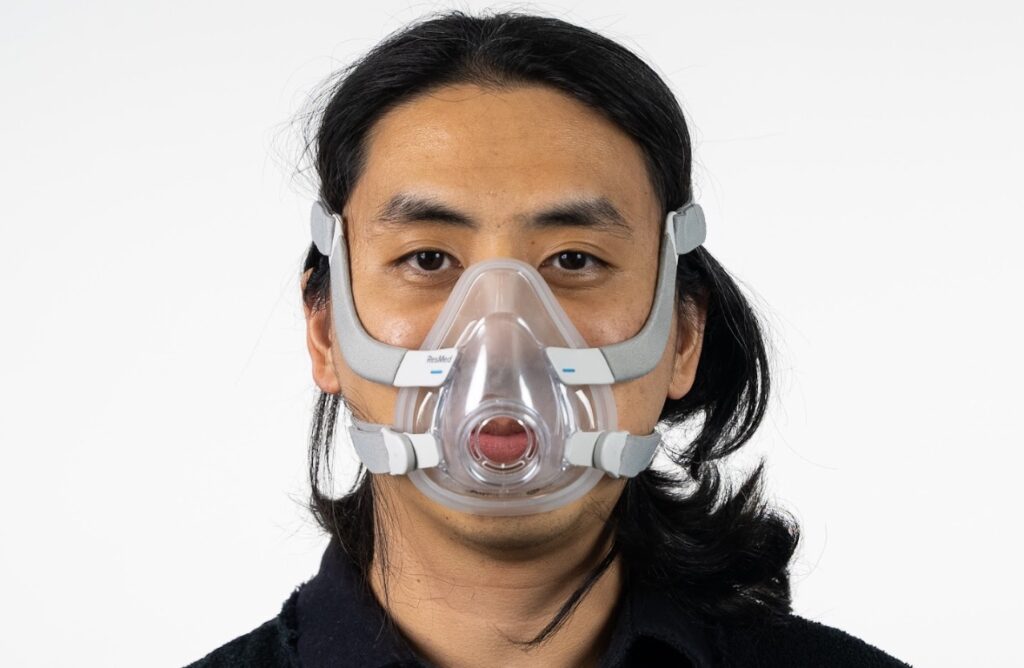
Mobile Apps and Data Tracking
In 2025, CPAP machines are likely to come equipped with sophisticated mobile applications that enable users to track their sleep data effortlessly. These apps can provide insights into the effectiveness of the therapy, allowing users to make informed decisions about their treatment. Users can expect features such as daily usage statistics, leak detection, and even reminders for mask replacement. Furthermore, the applications may incorporate educational resources, offering tips on optimising sleep hygiene and lifestyle adjustments that can complement CPAP therapy. This holistic approach not only enhances user engagement but also encourages a proactive stance towards managing sleep health.
Remote Monitoring and Support
Remote monitoring capabilities will be another significant advancement. Healthcare providers can access patient data remotely, allowing for timely interventions and adjustments to therapy settings. This feature not only enhances patient care but also reduces the need for frequent in-person visits, making the management of sleep apnoea more convenient. Additionally, the ability for healthcare professionals to monitor trends over time can lead to more personalised treatment plans, tailored specifically to the individual’s needs. With the integration of artificial intelligence, these systems may even predict potential issues before they arise, ensuring that users receive the most effective care possible without unnecessary disruptions to their daily lives.
Find about cpap mask on: CPAP Mask Leaks Common Causes and How to Fix Them
Enhanced Comfort Features
Comfort is paramount for the success of CPAP therapy. As users spend a significant amount of time wearing masks, features that enhance comfort will be increasingly important in 2025.
Customisable Masks
Future CPAP machines are expected to offer a wider variety of mask styles and sizes, allowing users to find the perfect fit. Customisable masks that conform to the user’s facial contours will reduce discomfort and improve compliance. Additionally, advancements in materials will likely lead to softer, more breathable masks that minimise skin irritation. These innovations may include hypoallergenic materials that not only enhance comfort but also cater to users with sensitive skin or allergies. Furthermore, the integration of adjustable straps and cushioning systems will allow for a personalised experience, ensuring that the mask remains secure without causing unnecessary pressure points during sleep. Read more about allergies on https://www.mayoclinic.org/diseases-conditions/allergies/symptoms-causes/syc-20351497
Quiet Operation
Noise levels are a common concern for CPAP users. In 2025, manufacturers are anticipated to focus on producing quieter machines, utilising advanced sound-dampening technologies. A quieter machine ensures a more restful sleep for both the user and their partner, enhancing the overall sleep environment. In addition to noise reduction, future models may incorporate smart technology that allows users to monitor sound levels and adjust settings accordingly through a mobile app. This level of control not only empowers users to optimise their sleep experience but also fosters a greater sense of independence in managing their therapy. As the technology evolves, we may also see the emergence of machines that can learn and adapt to the user’s sleep patterns, further enhancing the overall comfort and efficacy of CPAP therapy.

Advanced Therapy Modes
As research into sleep apnoea continues to evolve, so too will the therapy modes available in CPAP machines. Advanced therapy options will cater to a broader range of sleep disorders and individual preferences.
Auto-Adjusting Pressure Settings
Auto-adjusting CPAP machines will become more sophisticated, automatically responding to changes in the user’s breathing patterns throughout the night. This feature ensures that the pressure delivered is optimal at all times, improving comfort and efficacy. Users can expect machines that can seamlessly switch between different pressure levels based on their needs.
Integrated Oxygen Therapy
For patients with complex respiratory conditions, integrated oxygen therapy will be a valuable feature. CPAP machines that can deliver supplemental oxygen alongside positive airway pressure will provide comprehensive treatment options, addressing multiple aspects of the user’s health.
Improved Humidification Systems
Dry air can be a significant issue for CPAP users, leading to discomfort and irritation. Enhanced humidification systems are expected to be a standard feature in future CPAP machines, providing optimal moisture levels during therapy.
Adaptive Humidifiers
Adaptive humidifiers that adjust humidity levels based on environmental conditions will become commonplace. These systems will monitor the ambient temperature and humidity, ensuring that the user receives the most comfortable and effective therapy possible. Click here to find more about temperature.
Easy Maintenance and Cleaning
Future humidification systems will also focus on ease of maintenance. CPAP machines with self-cleaning features or easily removable components will make the cleaning process more straightforward, encouraging users to maintain their equipment regularly. This will not only enhance hygiene but also prolong the lifespan of the machine.
Data Security and Privacy
With the rise of smart technology comes the necessity for robust data security measures. As CPAP machines collect sensitive health information, ensuring the privacy and security of this data will be paramount in 2025.
Secure Data Transmission
Future CPAP machines will likely incorporate advanced encryption methods for data transmission. This will protect users’ health information from unauthorised access, ensuring that their privacy is maintained. Users can expect to have control over their data, with options to share information selectively with healthcare providers.
User-Friendly Privacy Settings
A focus on user-friendly privacy settings will empower individuals to manage their data more effectively. Future machines may include straightforward options for users to opt-in or opt-out of data sharing, providing peace of mind regarding their personal information.
Eco-Friendly Designs
As environmental concerns grow, the demand for eco-friendly products is increasing. CPAP machines in 2025 are expected to reflect this trend, with designs that prioritise sustainability.
Energy Efficiency
Manufacturers will likely focus on creating energy-efficient models that consume less power without compromising performance. This not only benefits the environment but also reduces electricity costs for users.
Recyclable Materials
In addition to energy efficiency, the use of recyclable materials in the construction of CPAP machines will become more prevalent. Users can expect products that are designed with sustainability in mind, contributing to a greener future.
Personalisation and User Experience
As technology advances, personalisation will play a crucial role in enhancing the user experience. Future CPAP machines will likely offer features that cater to individual preferences and needs.
Customisable Settings
Users will be able to customise various settings, including pressure levels, ramp times, and humidification levels, through intuitive interfaces. This level of personalisation will empower users to tailor their therapy to their specific requirements, improving adherence and satisfaction.
Interactive User Interfaces
Interactive user interfaces with touchscreens and voice command capabilities will enhance usability. These interfaces will simplify navigation and allow users to access information quickly, making the overall experience more enjoyable.
Conclusion
Investing in a CPAP machine with these innovative features will ensure that users receive the best possible care for their sleep apnoea. As manufacturers continue to prioritise user needs and preferences, the journey towards restful sleep will become more accessible and enjoyable for everyone.
In conclusion, staying informed about the latest developments in CPAP technology will empower users to make educated decisions about their treatment options. Embracing these advancements will lead to a healthier, more restful future.
-
Delta 9 Greensboro NC
Delta 9 Greensboro is a top-rated cannabis dispensary located in Greensboro, North Carolina. The dispensary is known for offering a wide variety of CBD and THC products of high quality. In this article, we will explore what Delta-9 THC is, its effects and benefits, legal status, and other aspects of the Delta 9 Greensboro brand. We will also compare Delta-9 THC to CBD and look at some local Delta-9 competitors in Greensboro.
Understanding Delta-9 THC
Delta-9 THC (Tetrahydrocannabinol) is a psychoactive cannabinoid found in the cannabis plant, responsible for the euphoric “high” effect when consumed. Delta-9 THC is one of the most abundant and well-known cannabinoids found in the plant, and it is typically extracted and refined to create a wide range of THC products.
When it comes to understanding Delta-9 North Carolina, it’s essential to know that it is just one of many cannabinoids found in the cannabis plant. Other cannabinoids, such as CBD, CBG, and CBN, also have potential therapeutic benefits and can interact with Delta-9 THC to create unique effects.
What is Delta-9 THC?
Delta-9 THC is a chemical compound found in the cannabis plant, typically in its dried flowers or buds. This psychoactive cannabinoid binds to the CB1 receptors in the brain and nervous system, creating a range of psychoactive effects.
When consumed, Delta-9 THC can produce a range of effects, including altered perception, increased appetite, and changes in mood. The effects and potency of Delta-9 THC can vary depending on the strain, mode of consumption, and dosage. For example, smoking or vaporizing Delta-9 THC can produce effects more quickly than consuming edibles, which can take longer to take effect.
Despite the potential for psychoactive effects, many users report that Delta-9 THC can be a valuable tool for relaxation, creativity, and reducing stress and anxiety.

Effects and Benefits of Delta-9 THC
Delta-9 THC is known for its psychoactive effects, but it also has a variety of potential therapeutic benefits. Some users report that Delta-9 THC can help alleviate anxiety, depression, chronic pain, and other medical conditions. Additionally, some researchers are investigating the potential for Delta-9 THC to slow the growth of cancer cells in the body.
While Delta-9 THC can produce a range of benefits, it is essential to follow dosage guidelines and speak with a medical professional before consuming THC products for medical purposes. It’s also important to note that the effects of Delta-9 THC can vary depending on the individual, and some users may experience negative side effects such as paranoia or anxiety.
Legal Status of Delta-9 THC
The legal status of Delta-9 THC varies depending on the state. In North Carolina, it is illegal to use or possess Delta-9 THC recreationally. However, Delta-9 THC products can be consumed medically with a valid medical marijuana card. Delta 9 Greensboro is fully licensed to operate and sell THC products to customers with a valid medical marijuana card.
It’s important to note that the legality of Delta-9 THC and other cannabis products is a complex issue that is constantly evolving. While some states have legalized cannabis for both medical and recreational use, others still have strict laws prohibiting any form of cannabis use. It’s crucial to stay up-to-date on the laws in your state and to consult with a legal professional if you have any questions or concerns.
Delta 9 Greensboro: A Closer Look
Delta 9 Greensboro is a leading cannabis dispensary that offers a wide range of high-quality cannabis products to meet the needs of all cannabis enthusiasts. The dispensary is located at 2236A Fleming Rd, Greensboro, NC 27410, making it easily accessible to customers in the area. Delta 9 Greensboro also offers an online shopping platform where customers can browse and select products that suit their needs, and either schedule a pickup or have products delivered to their doorstep.
Location and Contact Information
The location of Delta 9 Greensboro is easily accessible and convenient for customers in Greensboro and the surrounding areas. The dispensary is located at 2236A Fleming Rd, Greensboro, NC 27410, making it easy for customers to find and visit. Customers who prefer to shop online can also easily access the Delta 9 Greensboro website, which has an easy-to-use interface where they can browse and select products that suit their needs.
If you have any questions or concerns, the Delta 9 Greensboro team is always available to help. You can reach them at (336) 617-6358 or by emailing [email protected]. The team is knowledgeable and professional, and they are always happy to assist customers with any queries they may have.
Products Offered
Delta 9 Greensboro offers a wide range of high-quality cannabis products to meet the needs and preferences of all cannabis enthusiasts. The dispensary carefully formulates and tests all of its products to ensure high quality and purity. Customers can choose from a variety of products, including flowers, concentrates, edibles, and vapes. Delta 9 Greensboro sources its products from local farms to ensure that customers receive only the freshest and most potent products.
Flowers are available in a variety of strains and are perfect for customers who prefer to smoke or vaporize their cannabis. Concentrates are ideal for customers who prefer a more potent and concentrated form of cannabis. Edibles are perfect for customers who prefer to consume cannabis in a discreet and tasty way. Vapes are perfect for customers who prefer a smoke-free and odorless way to consume cannabis.
Customer Reviews and Testimonials
Delta 9 Greensboro has received a lot of praise from its customers, who have regularly left positive reviews and testimonials online. Customers have appreciated the professionalism and knowledge of the staff at the dispensary, as well as the quality and range of products offered. The team at Delta 9 Greensboro is dedicated to providing customers with the best possible experience, and they are always happy to assist customers with any queries or concerns they may have.
If you are looking for high-quality cannabis products and excellent customer service, look no further than Delta 9 Greensboro. With a wide range of products and a knowledgeable team, Delta 9 Greensboro is the perfect destination for all your cannabis needs.
Exploring the Delta-9 Market in Greensboro
Delta-9 THC, also known as delta-9-tetrahydrocannabinol, is a psychoactive compound found in cannabis that is becoming increasingly popular in Greensboro. With its ability to provide a range of therapeutic benefits, Delta-9 THC has become a go-to option for many people seeking relief from various ailments.
Local Competitors and Alternatives
Greensboro is home to several dispensaries and online stores that offer a range of Delta-9 THC products, each with their own unique qualities and benefits. One of the most popular competitors to Delta 9 Greensboro is Buddha’s Bazaar, which offers a wide selection of cannabis products, including edibles, concentrates, and flower. Trulieve is another popular alternative, known for its high-quality Delta-9 THC products and exceptional customer service. The Hemp Store of Greensboro is also worth mentioning, offering a variety of CBD products, as well as Delta-8 THC products, which are becoming increasingly popular among cannabis enthusiasts.
Navigating the Legal Landscape
Despite the growing popularity of Delta-9 THC products in Greensboro, there is still a lot of uncertainty surrounding their legality in North Carolina. However, Delta 9 Greensboro is fully licensed and operates within the legal limits to provide customers with high-quality THC products. The dispensary takes great care to ensure that its products are safe and compliant with all state regulations. Customers who would like to use THC products for medical purposes should consult with a medical doctor or apply for a medical marijuana card and shop at Delta 9 Greensboro.
Supporting Local Businesses
Shopping at Delta 9 Greensboro not only provides customers with access to high-quality Delta-9 THC products but also supports local businesses and the local economy. The dispensary sources its products from local and reputable farmers, ensuring that the community benefits from the business’s success. In addition, the dispensary employs local staff, providing jobs and contributing to the local economy. Delta 9 Greensboro also strives to create a community of cannabis enthusiasts who take pride in their locality, hosting events and educational workshops to promote the benefits of cannabis and its role in the community.
Overall, Delta 9 Greensboro is a great option for anyone looking to explore the world of Delta-9 THC products. With its commitment to quality, compliance, and community, Delta 9 Greensboro is a trusted source of high-quality THC products that can provide a range of therapeutic benefits.
Delta-9 THC vs. CBD: What’s the Difference?
The cannabis plant contains over 100 different cannabinoids, each with its own unique chemical structure and potential therapeutic benefits. Two of the most well-known cannabinoids are Delta-9 THC and CBD (Cannabidiol).
Chemical Structure and Effects
Delta-9 THC (tetrahydrocannabinol) is the primary psychoactive compound found in the cannabis plant. When consumed, Delta-9 THC binds to the CB1 receptors in the brain, producing a range of euphoric effects such as increased appetite, altered perception, and relaxation.
CBD, on the other hand, is non-psychoactive, meaning it doesn’t create a “high” effect when consumed. Instead, CBD has a range of potentially therapeutic benefits, including anti-inflammatory, anti-anxiety, and anti-seizure properties. CBD works by interacting with the body’s endocannabinoid system, which helps regulate various physiological and cognitive processes.
The main difference between Delta-9 THC and CBD is their chemical structure and the effects they produce when consumed. While THC is psychoactive and produces a range of euphoric effects, CBD is non-psychoactive and tends to create a calming and relaxing effect in users.
Medical Applications
Both Delta-9 THC and CBD have potential medical benefits, but they work in different ways and can potentially benefit individuals with different medical needs.
Delta-9 THC can potentially help with chronic pain, anxiety, and depression. It has also been shown to stimulate appetite and reduce nausea in individuals undergoing chemotherapy. However, Delta-9 THC can also produce unwanted side effects such as paranoia, anxiety, and impaired coordination.
CBD, on the other hand, can potentially help with inflammation, anxiety disorders, and seizure disorders. It has also been shown to have neuroprotective properties and may help reduce the risk of certain types of cancer. However, more research is needed to fully understand the potential therapeutic benefits of CBD.
It is essential to speak with a healthcare professional before consuming Delta-9 THC or CBD products for medical purposes. They can help you determine if these products are right for you and recommend appropriate dosages.
Choosing the Right Product for You
When choosing a cannabis product to consume, it is essential to know your medical needs and preferences. Delta 9 Greensboro offers a range of quality THC and CBD products to meet the needs of all customers.
Their knowledgeable staff can also help you choose the perfect product for you based on your needs and preferences. Whether you’re looking for a high-THC strain to help with chronic pain or a CBD tincture to help with anxiety, Delta 9 Greensboro has you covered.
Remember, always consume cannabis products responsibly and in moderation. Start with a low dosage and gradually increase as needed to avoid unwanted side effects.
Conclusion
Delta-9 THC is an increasingly popular product in Greensboro, and Delta 9 Greensboro provides customers with a range of high-quality THC products to meet their needs. However, it is crucial to navigate the legal landscape and speak with a medical professional before consuming THC products for medical purposes. With a range of products, knowledgeable staff, and a commitment to supporting the local economy, Delta 9 Greensboro is an excellent option for all cannabis enthusiasts looking for the best THC and CBD products in Greensboro.
-
Are Delta 9 Gummies Legal in NC
Delta 9 gummies have been gaining popularity in recent years, with claims of numerous benefits ranging from pain relief to reducing anxiety. However, their legal status has been called into question, particularly in states like North Carolina, where cannabis laws can be strict. Here, we delve into the legality of delta 9 gummies in North Carolina, exploring what they are, how they differ from delta 8 THC, and what the potential consequences are of possessing them in this state.
Understanding Delta 9 Gummies
Delta 9 gummies are ingestible candies that contain delta 9 tetrahydrocannabinol (THC), which is a psychoactive component found in cannabis. They are usually made with cannabis oil extracted from marijuana plants, and are popular due to their discreet and easy-to-use form. These gummies can contain varying levels of Delta 9 THC North Carolina, with some brands boasting up to 50 milligrams per candy.
What are Delta 9 Gummies?
Delta 9 gummies are a type of edible cannabis product that are infused with delta 9 THC. They come in a variety of flavors, shapes, and strengths, making them an attractive option for consumers who prefer a controlled dosage of THC in a more inconspicuous form. Delta 9 THC is known for its psychoactive properties, which can cause a sense of euphoria, altered perception, and a relaxed state of mind in users.
One of the main benefits of delta 9 gummies is that they are discreet and easy to consume. Unlike smoking or vaping cannabis, which can be noticeable and may leave a lingering odor, delta 9 gummies can be consumed without drawing attention. They can be enjoyed at home or on the go, making them a convenient option for those who want to incorporate cannabis into their daily routine.
Another benefit of delta 9 gummies is that they offer a controlled dosage of THC. Each gummy contains a specific amount of THC, which is listed on the packaging. This makes it easy for users to know exactly how much THC they are consuming, and to adjust their dosage accordingly. For those who are new to cannabis or who have a low tolerance, starting with a small dose of delta 9 gummies can be a good way to ease into the experience.

Delta 9 THC vs. Delta 8 THC
Delta 8 THC is another form of tetrahydrocannabinol that has emerged as a popular option for those seeking the benefits of THC without the psychoactive effects. Delta 8 is chemically similar to delta 9 but contains a double bond on its eighth carbon chain, which alters its psychoactive properties. In North Carolina, delta 8 THC is legal under certain conditions, unlike delta 9 THC, which is classified as a Schedule I controlled substance.
While delta 8 THC may offer some of the benefits of THC without the psychoactive effects, it is important to note that it is still a psychoactive substance and can cause impairment. It is also important to purchase delta 8 products from a reputable source, as some products may contain harmful contaminants or inaccurate labeling.
Overall, both delta 9 and delta 8 gummies can offer a range of benefits for those who are interested in incorporating cannabis into their lives. Whether you prefer the psychoactive effects of delta 9 or the milder effects of delta 8, there are options available to suit your needs. As with any cannabis product, it is important to consume delta 9 or delta 8 gummies responsibly and to follow dosage guidelines to avoid unwanted side effects.
North Carolina’s Cannabis Laws
North Carolina has some of the strictest cannabis laws in the United States, with no medical marijuana program and a limited hemp-derived CBD market. Under state law, any product that contains more than 0.3% delta 9 THC is considered a controlled substance and is illegal to possess, sell, or distribute.
The Legality of Delta 9 THC in North Carolina
Delta 9 THC remains illegal in North Carolina, even for medical purposes. In fact, possessing any amount of delta 9 THC can result in felony charges, with up to 8 months in prison and a fine of $1,000. North Carolina also imposes harsh penalties for producing, distributing, or selling any form of delta 9 THC, with charges increasing based on the quantity and intent of the crime.
Despite these strict laws, there is a growing movement to reform North Carolina’s cannabis laws. Advocates argue that legalizing or decriminalizing cannabis could provide significant benefits, including increased tax revenue, reduced law enforcement costs, and expanded access to medical cannabis for those who need it.
Medical Marijuana in North Carolina
North Carolina currently does not have a legal medical marijuana program. While there have been efforts to establish one, the state has not yet passed any laws allowing for medical cannabis usage, meaning that delta 9 gummies are not a legal option for those seeking medical relief.
However, some patients in North Carolina have turned to CBD products as an alternative form of treatment. CBD, or cannabidiol, is a non-psychoactive compound found in cannabis that has been shown to have a variety of medical benefits. While CBD products are legal in North Carolina, they are subject to strict regulations and must contain less than 0.3% THC.
Hemp-derived CBD Products in North Carolina
North Carolina does allow for hemp-derived CBD products that contain less than 0.3% THC. These products can include tinctures, oils, and edibles that are derived from industrial hemp and possess less than the legal limit of THC. However, delta 9 gummies are illegal to possess or distribute, even if they are derived from industrial hemp.
Despite these restrictions, the market for hemp-derived CBD products in North Carolina is growing. Many consumers are turning to CBD as a natural remedy for a variety of ailments, including anxiety, pain, and inflammation. Some businesses in North Carolina have even begun to specialize in producing and selling high-quality CBD products, including oils, tinctures, and topicals.
Overall, while North Carolina’s cannabis laws remain some of the strictest in the country, there is hope that the state will eventually move towards a more progressive approach to cannabis. In the meantime, consumers and patients in North Carolina should be aware of the laws surrounding cannabis and CBD products, and should only purchase products from reputable sources that comply with state regulations.
Delta 9 Gummies and Federal Regulations
The 2018 Farm Bill and Hemp-derived Products
The 2018 Farm Bill was a significant turning point for the hemp industry in the United States. The bill legalized industrial hemp-derived products that contain less than 0.3% delta 9 THC, which includes hemp-derived CBD products. This was a major win for the hemp industry, as it opened up a whole new market for hemp-derived products.
Since the passage of the 2018 Farm Bill, the hemp industry has exploded, with new companies popping up all over the country to capitalize on the growing demand for hemp-derived products. Delta 9 gummies, which are made from hemp-derived delta 9 THC, have become a popular product among consumers looking for a discreet and convenient way to consume delta 9 THC.
However, it is important to note that while hemp-derived CBD products are legal under federal law, some states may have stricter regulations. It is always important to check your local laws before purchasing or using any hemp-derived product.
The Controlled Substances Act and Delta 9 THC
While hemp-derived CBD products are legal under federal law, delta 9 THC remains a Schedule I controlled substance under the Controlled Substances Act. This means that it is illegal to possess, distribute, or use, and penalties can range from fines to imprisonment, depending on the quantity and intent of the crime.
Delta 9 gummies, which contain delta 9 THC, are therefore illegal to possess, use, or distribute under federal law. It is important to note that while some states have legalized the use of delta 9 THC for medical or recreational purposes, it is still illegal under federal law.
Despite the legal risks associated with delta 9 gummies, some consumers continue to use them for their purported health benefits. Proponents of delta 9 THC claim that it can help with a variety of conditions, including chronic pain, anxiety, and insomnia. However, more research is needed to fully understand the effects of delta 9 THC on the body, and consumers should always consult with a healthcare professional before using any new product.
Potential Consequences of Possessing Delta 9 Gummies in North Carolina
Delta 9 THC products like gummies have become increasingly popular in recent years due to their ease of use and discreetness. However, possessing delta 9 gummies in North Carolina can have severe legal consequences.
Legal Penalties for Possession
North Carolina takes a strict stance on delta 9 THC products, and even possessing a single gummy can lead to felony charges. This means that those found with delta 9 gummies can face imprisonment for up to 8 months and a fine of up to $1,000. The penalties increase with the amount of delta 9 gummies found in possession, and those found distributing or selling delta 9 gummies can be charged with even harsher penalties.
It is important to note that North Carolina does allow for the use of certain medical cannabis products, but these products must be low in THC and high in CBD. Delta 9 gummies are not included in this exception, and possessing them can result in serious legal consequences.
Traveling with Delta 9 Gummies
Traveling with delta 9 gummies can also lead to legal trouble, particularly when crossing state lines. Even if a state has legalized cannabis or allows for medical usage, it is still illegal to transport delta 9 gummies across state lines. Those caught with delta 9 gummies while traveling can be subjected to federal and state penalties, including fines and imprisonment.
In addition to legal consequences, traveling with delta 9 gummies can also pose a safety risk. It is important to remember that gummies can look like regular candy, and children or pets may accidentally ingest them if they are not properly stored. This can result in serious medical emergencies and should be avoided at all costs.
Overall, possessing delta 9 gummies in North Carolina can have serious legal and safety consequences. It is important to always be aware of the laws surrounding cannabis products and to use them responsibly.
Alternatives to Delta 9 Gummies in North Carolina
Delta 8 THC Gummies
Delta 8 THC gummies can be a legal alternative for those seeking the benefits of THC without the psychoactive effects. These gummies contain delta 8 THC, which is legal in North Carolina under certain conditions. Delta 8 THC is also known for its potential therapeutic benefits, including reducing pain, inflammation, and anxiety.
CBD Gummies and Edibles
CBD gummies and edibles are another option for those seeking the benefits of cannabis without the psychoactive effects. CBD is a non-intoxicating component found in cannabis, and products derived from industrial hemp can be legally sold in North Carolina. CBD gummies and edibles can promote relaxation, reduce anxiety, and improve sleep quality, among other potential benefits.
Conclusion
Delta 9 gummies remain illegal in North Carolina, and those caught in possession of them can face severe legal consequences. While there are legal alternatives, such as delta 8 THC gummies or CBD products, it is always important to check state and federal laws before purchasing and using any cannabis products. As cannabis laws continue to evolve across the country, it is essential to stay informed and educated about the legal implications of using these products.
-
Reasons Why You Shouldn’t Ignore Ovulation Cramps
The reproductive process would not be complete without ovulation. Although some women may not experience any discomfort during ovulation, it can be quite excruciating for others.
Ovulation discomfort is a normal symptom and shouldn’t be ignored unless it’s accompanied by other symptoms that make you worried, especially persistent chronic pain. What you need to know is as follows.
Ovulation Pain: The Essentials
Pain during ovulation is usually mild and short-lived. On the day you think you might be ovulating; you can have pain on one side of your body for a few minutes or perhaps a couple of hours.
As a surge of luteinizing hormone (LH) travels through your system, a follicular cyst swells and eventually ruptures, releasing the egg.

The fallopian tube shortens after the egg is released, allowing it to more easily reach the sperm that are waiting to fertilize it. While this is happening, blood and other fluids from the damaged follicle may leak into the abdominal cavity and pelvis, causing irritation.
The pain might be intense or dull, or anything in between. Discharge, such as spotting, is a possible side effect. Please see a doctor if the pain persists or if it occurs at other times of your cycle.
Other Causes of Period Pain
It’s possible that the discomfort you’re feeling during your period is being caused by something than your period.
Take note of when and where the pain occurs, how long it lasts, and any other symptoms it may bring on. Keeping track of your symptoms can aid you and your doctor in identifying the source of the problem.
It’s best to see a doctor if your midcycle pain persists so that he or she can run diagnostics and prescribe appropriate medication.
Cysts
Ovarian cysts can induce a wide range of uncomfortable side effects, including but not limited to abdominal pain, nausea, and bloating. Cysts might vary in their ability to produce symptoms.

Other, less common cyst types that might cause discomfort include dermoid cysts, cystadenomas, and endometrial cysts.
Ovarian cysts, or polycystic ovarian syndrome (PCOS), are the defining feature of a separate disorder. Infertility can develop in women with PCOS if the condition is left untreated.
A CT scan, MRI, or ultrasound may be ordered by your doctor to help identify the sort of cyst you have. Cysts often disappear on their own without the need for treatment.
Cysts are usually harmless, but they might cause problems if they enlarge or are atypical.
Adhesions or Endometriosis
In the painful condition of endometriosis, tissue that looks like the uterine lining grows in places outside the uterus.
In response to your hormones, the lining tissue of your uterus can become inflamed and bleed or inflame the surrounding area. You may have increased discomfort during your period if you have scar tissue or endometriosis adhesions.
Similarly, prior surgical procedures increase your risk of developing intrauterine adhesions, also called Asherman syndrome. Cesarean section or dilation and curettage (D&C) are examples of such procedures.
These adhesions can also be the result of a previous uterine infection. It is also possible to develop Asherman syndrome for no apparent reason.
Your doctor may recommend a hysteroscopy or laparoscopy if he or she suspects one of these disorders, as they won’t show up on a standard ultrasound. These are operations that provide a clear view into the pelvic or uterine cavity for the clinician.
Disease Spread or the Emergence of STDs (STIs)
Does your discomfort coincide with a discharge that seems abnormal or smells bad? Are you running a fever? Does it hurt when you have to urinate?
These signs may indicate a serious bacterial illness or a sexually transmitted infection (STI) that requires immediate medical attention.
Infections can be caused by medical treatments, including childbirth. Even if you don’t have a urinary tract infection (UTI), you could be experiencing pelvic pain.
Condom use prevents the spread of sexually transmitted diseases such chlamydia, gonorrhea, and HPV.
Ectopic Pregnancy
Signs of an ectopic pregnancy include pain in only one side of the pelvis.
It’s a situation where an embryo implants somewhere other than the uterus, most commonly the fallopian tubes. There is a high mortality rate associated with ectopic pregnancies, and they are often identified by the eighth week.

You should consult a doctor right away if you have any suspicions that you could be pregnant. The rupture of the fallopian tube can be avoided with prompt medical attention and/or surgical removal of the pregnancy if it is discovered to be ectopic.
Managing Chronic Pain During Ovulation
If you’ve seen a doctor and they’ve ruled out anything serious, the pain you’re feeling is probably just regular ovulation discomfort. Please keep a close eye on your symptoms and report any changes to your doctor.
If you’re experiencing midcycle pain, try these strategies to relieve pain:
- Ibuprofen (Advil, Motrin, Midol) and naproxen are examples of OTC pain medicines you can try for pain relief.
- You can also discuss birth control with your doctor, if it’s a desire.
- You can use a heating pad on the region or simply soak in hot water.
If your ovulation pain doesn’t go away, it’s time to see a doctor.
Women between the ages of 21 and 29 are encouraged to get a Pap smear every three years in order to screen for cervical cancer, as recommended by the American College of Obstetricians and Gynecologists (ACOG).
Women between the ages of 30 and 65 should get a Pap smear every 3 years or a Pap smear plus an HPV test every 5 years, according to ACOG guidelines.
Cervical screening is not recommended for women over 65 unless they have a history of the following, according to ACOG guidelines:
All women of childbearing age should see a gynecologist once a year for a checkup and pelvic exam, as well as to discuss any other issues related to their reproductive health.
Annual checkups are advised, while a Pap smear may not be necessary every time. Call your doctor right away if you’ve been experiencing any pain or other symptoms and you haven’t already scheduled an appointment.
Summary
Midcycle cramps are a common symptom of ovulation for women who menstruate. Pelvic pain can also be caused by a number of different disorders, some of which can be quite serious if left untreated.
Always keep a close eye on your physical state and let your doctor know if you notice any changes.
Finally
For more information on chronic pain management, pain disorders, chronic pain resources, psychogenic pain, effective chronic pain treatment options or other physical therapy, you should book a consultation session with a specialist at Chronic Therapy today, to give you professional advice that will suit your personal experience.
Also, for people with chronic pain who are constantly worried on how to treat chronic pain or get their chronic pain treated, our specialist at Chronic Therapy have made huge success over the year in recommending reliable resources to manage chronic pain from nerve pain or any other developing chronic pain conditions.
-
Causes of Painful Urination
Dysuria, or pain during urination, is a catchall name for a variety of symptoms related to urination accompanied by chronic pain. The bladder, urethra, or perineum could be the source of the discomfort. Urine exits the body through a channel called the urethra.
The perineum refers to the area between the penis and the anus in humans. The perineum is the skin that lines the vagina between the anus and the vaginal opening.
Chronic urethral pain is extremely common. Multiple medical diseases can cause pain, burning, or stinging. and there are proven strategies for people that chronic pain affect.
See also: Reasons Why You Shouldn’t Ignore Ovulation Cramps
Why Would Urinating Hurt?
Bladder and Kidney Infections
A urinary tract infection is often characterized by painful urination (UTI). Bacterial infection is a possible cause of a UTI. Urinary tract infection and inflammation are also possible causes.

Your urinary system consists of your urethra, bladder, ureters, and kidneys. It is the ureters’ job to transport urine from the kidneys to the bladder. Urethral, prostate, or kidney inflammation can all contribute to uncomfortable urination.
It’s more common for persons with a vagina to get UTIs than it is for those with a penis. This is because those who have a vagina typically have a shorter urethra. Bacteria can reach the bladder more quickly if the urethra is shorter.
In addition to women, people going through pregnancy or menopause are also more likely to get a urinary tract infection.
Sexually Transmitted Infections (STIs)
If you have a sexually transmitted infection, you may also have pain when peeing (STI). Genital herpes, gonorrhea, and chlamydia are some STIs that can lead to painful urination.

Due to the fact that some STIs do not produce noticeable symptoms, it is crucial to get tested for them. There is a need for widespread STI testing among sexually active individuals.
Prostatitis
However, there are a variety of other medical issues that might make urinating uncomfortable. Prostatitis causes discomfort during urinating in people who have a prostate. The prostate gland has been inflamed and thus this ailment exists. It’s a common source of urinary irritation and burning.
Cystitis
Cystitis, or inflammation of the bladder lining, is another potential cause of painful urination. One of the names for interstitial cystitis (IC) is painful bladder syndrome. Typical cystitis is extremely common. Signs of IC include pelvic and bladder pain and soreness.
Bladder and urinary pain have been reported in patients undergoing radiation therapy. Radiation cystitis is the medical term for this problem.
Urethritis
When the urethra becomes inflamed, a condition called urethritis occurs. Urethritis is characterized by urinary discomfort and an increased need to pee.
Epididymitis
If you have a penis and are experiencing painful urination, you may be suffering from epididymitis, an inflammation of the epididymis. The epididymis, which sits behind the testicles, is responsible for the transportation and storage of sperm.
Pelvis Inflammatory Disease (PID)
The cervix, uterus, ovaries, and fallopian tubes can all be impacted by PID. Its symptoms include, but are not limited to, abdominal discomfort, sex pain, and urination pain.
PID is a life-threatening condition that begins with a bacterial vaginal infection and spreads to the ovaries and uterus.
Debilitating Uropathy caused by Obstruction
Urine reflux into the kidneys is a symptom of obstructive uropathy, which can be caused by a blockage in the ureter, the bladder, or the urethra. Although there may be many potential causes, it is critical to get medical attention if you experience any of the following symptoms.
Similar problems with urination and pain can be brought on by urethral stricture, in which the urethra becomes abnormally narrowed.
Urinary Calculi
If you suffer from kidney stones, you may experience discomfort when attempting to urinate. Stones in the kidneys are solid masses that form in the urine system.
Medications
A painful urination is a side effect of various drugs, including cancer treatments and some antibiotics. If you’re experiencing negative reactions to any medications you’re taking, be sure to tell your doctor.
Personal Care Items
Infection isn’t always the cause of painful urination. Products used in the vaginal area have also been linked to this condition. Vaginal tissues are especially vulnerable to irritation from soaps, lotions, and bubble baths.
In addition to causing irritation and painful urination, dyes included in laundry detergents and other toiletry products can be a source of discomfort.

Managing Chronic Pain During Urination
The initial stage in pain treatment will be to identify the source of the discomfort. Urinary discomfort can be treated with medicines prescribed by your doctor. UTIs, bacterial infections, and certain STIs can all be treated with antibiotics. Medications to soothe an inflamed bladder may be prescribed by your doctor.
In most cases, the pain associated with urinating due to a bacterial infection subsides soon after treatment begins. You should always follow your doctor’s instructions when taking medication.
Infections like interstitial cystitis can cause severe pain that can be difficult to manage. Drug treatments could take longer to show results. Up to four months of drug use may be required before you begin to feel better.
You can find some relief from your symptoms by making certain adjustments to your way of life. To lessen the possibility of irritation, you should avoid using scented cleaning products and personal care items.
When engaging in sexual activity, it is recommended that you use a condom or another reliable barrier device. The bladder can be irritated by certain meals and drinks, so it’s best to avoid them (such as highly acidic foods, caffeine, and alcohol).
Keep your fluid intake up.
When to Visit the Doctor to Relieve Pain
Get in touch with your local health care provider:
- If you’re pregnant and experiencing severe, prolonged pain, you may also be running a temperature.
- if you have pain passing a bladder or kidney stone if your urine has a strange odor, blood, or is hazy if the pain is accompanied by stomach distress
- The source of the discomfort can be determined by answering questions and submitting lab work requested by your doctor.
Finally
For more information on chronic pain management, pain disorders, chronic pain resources, psychogenic pain, effective chronic pain treatment options or other physical therapy, you should book a consultation session with a specialist at Chronic Therapy today, to give you professional advice that will suit your personal experience.
Also, for people with chronic pain who are constantly worried on how to treat chronic pain or get their chronic pain treated, our specialist at Chronic Therapy have made huge success over the year in recommending reliable resources to manage chronic pain from nerve pain or any other developing chronic pain conditions.
-
Terpenes in Medical Marijuana: An Overview
THC and CBD are the two cannabinoids most often brought up in discussions of medical cannabis plant. The Therapeutic Products Administration of Australia recognises only cannabidiol (CBD) and tetrahydrocannabinol (THC) as an API for medical marijuana (TGA). Despite the TGA’s view, more and more medical professionals are acknowledging the use of terpenes in cannabis treatment.
What are the benefits of terpenes? Patients typically want “Cannabis sativa” when they want something energising to help them feel less drowsy and more capable of dealing with discomfort all day long. Most individuals believe that knowing whether or not a medication is Sativa or Indica will influence how the treatment will feel (the mood of the drug), but in reality, it is the terpenes that make all the difference.
The more you learn about terpenes, the more you could wonder if a non-isolate product is consistent from batch to batch if the terpene profile is different (or measured).
In this post, you will get an understanding of terpenes sufficient to begin considering terpene profiles when selecting a medical cannabis product. The second part of this series will include more general information regarding terpenes, including their uses, dosages, and effects. Our terpene chart also includes vaporisation temperatures for each terpene.

What are Terpenes?
Terpenes are the molecules of aromatic hydrocarbons that give different plants their distinctive aromas. Terpenes may be present in cannabis at relatively high concentrations. Leaves, flowers, fruit, and sap are all ways in which plants communicate their messages. Protecting plants against predators and environmental changes, as well as attracting pollinators, is the task of terpenes.
Terpenes are responsible for the perfume and scent of plants like cannabis, among other functions in the plant.
Rose is not an isolated aroma. Terpenes such as citronellol, geraniol, linalool, farnesol, a-pinene, b-pinene, limonene, camphene, b-caryophyllene, and others are all part of this blend. Equally true of cannabis strains.
Terpenes are not only responsible for giving plants their distinctive aromas, but are also thought to be the “effect-drivers” of cannabis. Therefore, the terpene profile of a plant is more relevant than the plant’s Indica or Sativa status.
Where Can You Find Terpenes?
Terpenes occur naturally and in great quantity. Somewhere between 200 and 20,000 unique terpenes have been found, with just a small fraction expressed in the cannabis plant. Terpenes may be found in all plants and, unexpectedly, are produced by a small number of mammals. The same terpenes that give cannabis its distinctive aroma and flavour can be found in a wide variety of other plants and spices.
Terpenes found in cannabis are not unique. In the same way that a pinch of lavender on your pillow, a sunny afternoon at the florist, a breath of pine forest air, or the aroma of lemon in cleaning products all give you an idea of what terpenes in cannabis are like, these experiences all give you a sense of what it’s like to smoke the herb.

Which Type of Cannabis Products Include Terpenes?
Terpene-based cannabis catalyzers
Terpenes are present in certain cannabis products, but unfortunately not all. However, not all manufacturers keep track of terpene concentrations in their batches, even when they sell items with terpenes.
Knowing the various product categories might help you identify those that contain terpenes. The three most common forms of cannabidiol delivery are:
• Full-spectrum
• Isolates
• Broad-spectrum
Terpsolates, which have been trending internationally for a while and have just lately made their way Down Under, are another option.
Terpenes are included in full spectrum products.
Pure, full-spectrum extracts have all the beneficial properties of the plant they were made from, including the terpenes. Fats, waxes, and other fibrous elements are stripped away in the production of full-spectrum, making it distinct from the whole plant.
Certificates of Analysis should always indicate terpene content since the terpene concentration of an extract is often dramatically reduced throughout the extraction process.
It’s also worth noting that several manufacturers use terpene mixtures into their final products. The presence of the plant’s natural terpenes is a prerequisite for labelling a product as full-spectrum.
All-Purpose Formulations – Often Include Terpenes
In essence, broad-spectrum cannabis products are just full-spectrum ones with some of the less desirable components eliminated. As a rule, THC is the component that is being taken out. Unfortunately, the absence of narrow-specificity in broad-spectrum suggests that something was taken out.
Isolates Don’t Contain Terpenes
In contrast to extracts, which often include many compounds, isolates contain just one. Among these, you may find THC and CBD isolates. There are no terpenes or other cannabinoids in these products. There is a common misconception that these products are not as effective as a full spectrum option.
Terpene-Containing Isothiocyanates
To clarify, Terpsolates are just isolates that have had a terpene or terpene mix added to them. There aren’t any authentic terpenes left in the plant, therefore they have to be reintroduced back in. This is a novel concept, however there are already items on the market that fit this description in Australia.
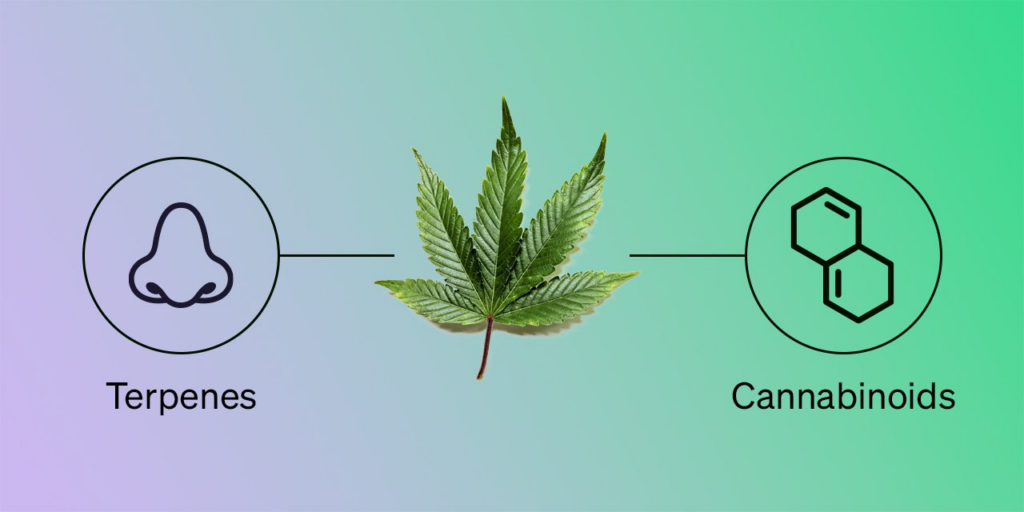
The Effects of Terpenes on The Human Body.
Terpenes, like other cannabinoid compounds, affect several bodily systems. To varying degrees, terpenes can act on the following receptors. Receptors for gamma-aminobutyric acid, adenosine, serotonin, PPAR-y, and cannabidiol
Although present in medicinal cannabis at relatively modest quantities, their bioactivity is greatly enhanced by the inhalation method. Not only that, but many terpenes have many functions and are thus viewed as “promiscuous” compounds.
It has been established that terpenes enhance the pharmacokinetics of THC via increasing vasodilation of alveolar capillaries, so facilitating greater absorption of THC by the lungs, and by increasing permeability of the blood-brain barrier.
Terpenes, like limonene, which is also present in citrous, appear to have agonistic actions on receptors for serotonin (5HT1A), adenosine (AdoR), and dopamine (DAT) (Ref 1, Ref 2, Ref 3). Perhaps this explains why citrus-scented chemovars of cannabis are so highly regarded by those who use it to lift their spirits.
The “Entourage Effect” postulates that the synergistic effects of the plant’s compounds are greater than the sum of their parts. The role of terpenes in the entourage effect has been hypothesised but has not been experimentally confirmed.
Do Terpenes Have the Potential to Induce Inebriation?
No. In and of themselves, terpenes do not have the capacity to induce intoxication or other psychoactive effects.
Do Terpenes Have Any Negative Effects?
Natural or synthetic, there is always the chance of unintended consequences when using chemicals. Though terpene side effects aren’t unheard of, they’re not very prevalent either. For those with a heightened sensitivity to terpenes, there may be some negative reactions.
Extremely high concentrations of some terpenes can have immediate hazardous consequences as skin irritation, allergic responses, nausea, and headaches. These amounts, however, are well beyond what anyone could safely consume from cannabis products.
Each individual will respond best to a different combination of terpenes. A universally effective product is as elusive as a perfect cannabis strain. In order to determine which terpenes or terpene combinations work best for a certain patient, it is generally necessary to conduct a series of trials with varying concentrations and ratios of these compounds.
Summary
Terpenes are the aromatic plant oils that give different cannabis strains their distinctive aromas. Terpenes have been used for herbal therapy for thousands of years, although there is little clinical data supporting their use.
The expanding corpus of research on the entourage effect suggests that terpenes might augment the effects of cannabis, which is something to keep in mind when developing solutions for patients. Terpenes are often well tolerated and can be found in full-spectrum, broad-spectrum, and terpsolate formulations.
Many manufacturers now check the terpene concentration of their oil and floral products on a consistent basis. That’s why it’s important to check certificates of analysis (CoAs) to see whether manufacturers are forthcoming about the ingredients they use and the consistency of their products from batch to batch.
Finally
We know you might be curios to find out more information and discuss medicinal cannabis uses, or where to get legal medicinal cannabis products in Australia, or who is authorised to prescribe medicinal cannabis products to you, and we know lots of people are also worried about the use of medicinal cannabis.
For all these, schedule a consultation session today with our experts at Chronic Therapy to get professional advice about any medicinal cannabis product or medicinal use of the product to maximise your benefits from it.



